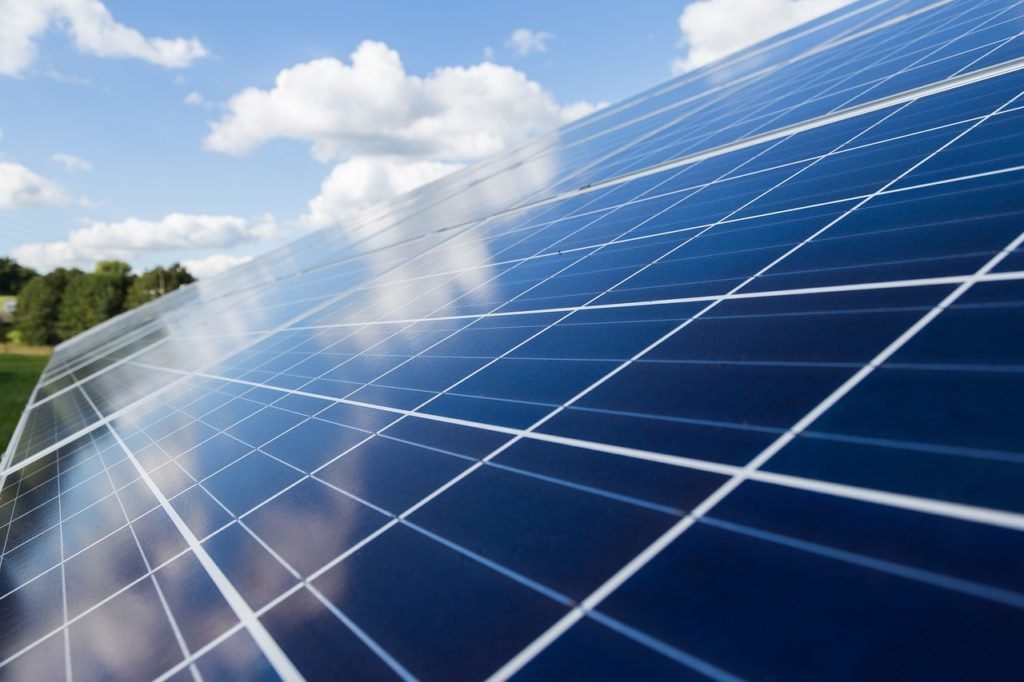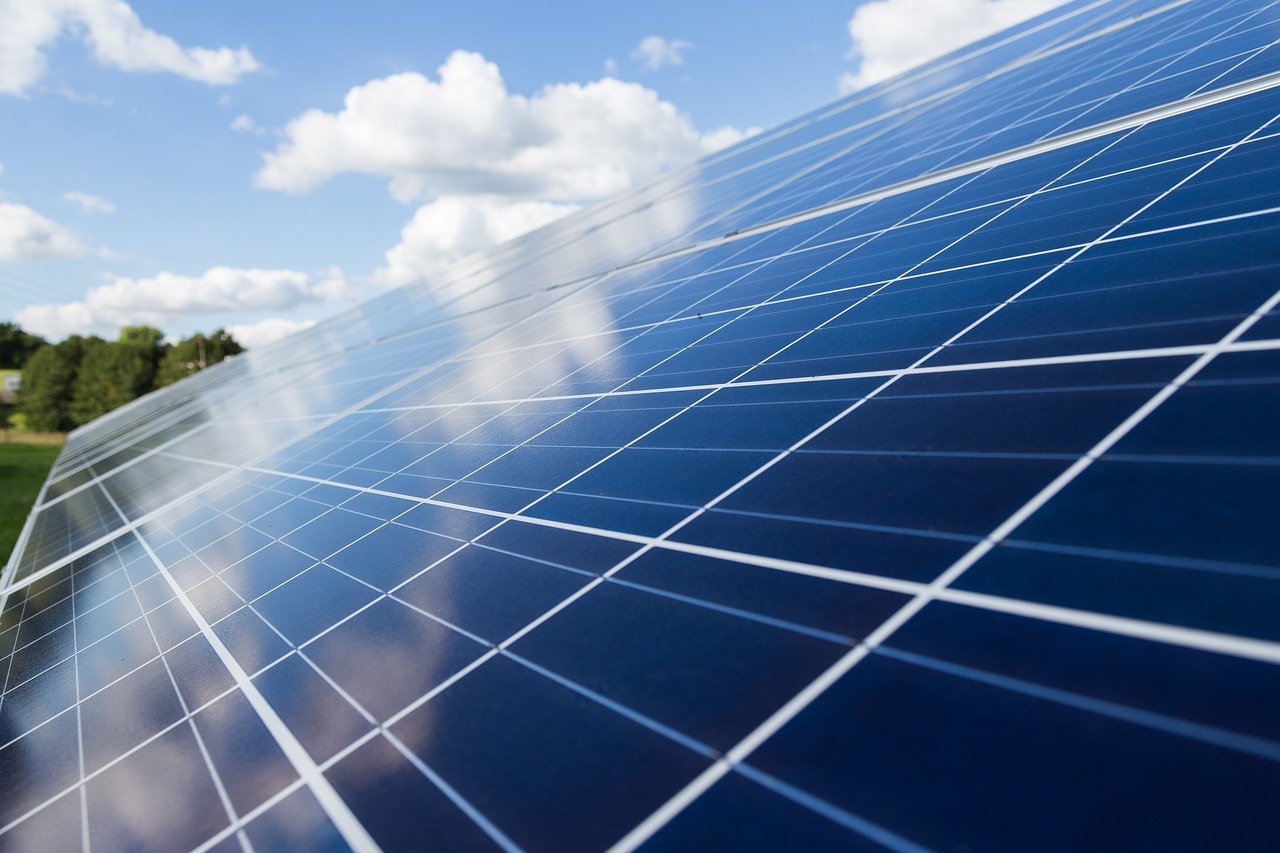As you broach the intriguing topic of solar panels and their ability to function in the absence of sunlight, be prepared to be enlightened! You are about to embark on a journey to learn about the intricate dynamics of solar energy and the astonishing facets of solar panels’ functionality during nocturnal hours. You’re not just going to discover whether solar panels can produce power at night, but you’ll also unravel the science behind it. And when all answers unfold in this article, the mystery surrounding solar panels working at night would surely turn into clear understanding.

Understanding the Basics: Solar Panels Functionality
What is a Solar Panel and How Does it Work?
A solar panel is a device designed to harness the sun’s energy and convert it into usable electricity. Each solar panel contains many small units called photovoltaic cells, each made from semiconductor materials like silicon. As sunlight hits these cells, it excites the electrons within, pushing them out of their atomic orbits. This movement creates an electric current, which the solar panel then channels to power appliances and other equipment in your home or business.
Factors that Affect Solar Panel Efficiency
The efficiency of solar panels can be influenced by several factors. The angle and orientation of your solar panels can affect how much sunlight they absorb. For instance, panels that face true south (in the northern hemisphere) receive more sunlight than those facing other directions. The temperature also plays a role – higher temperatures can decrease solar panel efficiency. Other factors include the age of the panels, the cleanliness of the panels, and the presence of shade or obstructions like trees and buildings.
The Role of Sunlight in Solar Energy Conversion
Sunlight plays an essential role in solar energy conversion. Solar panels need sunlight to produce electricity – no sunlight, no power. Without enough light to excite the electrons in those photovoltaic cells we talked about, the process can’t start. Sunlight is the fuel that powers solar panels, making them a sustainable and renewable energy source.
Clearing the Myth: Solar Panel Operation at Night
Why there is a Common Belief that Solar Panels Can’t Work at Night
You now understand that solar panels need sunlight to create electricity, so it’s easy to see why so many people believe that solar panels can’t work at night. After sunset, the sun’s rays no longer reach the solar panel, causing the electricity production to stop. However, this belief needs a bit of clarification.
The Concept of Solar Energy Storage
While it’s true that solar panels don’t generate electricity at night, they can still supply power after dark thanks to solar energy storage. During the daytime, your solar panels may produce more electricity than you use. This extra energy doesn’t go to waste, and you can store it in a component called a solar battery. At night, when your panels aren’t producing electricity, you can draw power from this stored energy.
Contradictions: Solar Panels Do Work at Night?
To be clear, solar panels themselves do not generate electricity at night. However, a comprehensive solar power system – complete with solar energy storage like batteries – can supply electricity 24/7. Think of it like storing daylight in a container and using it to light your house at night.
Unraveling the Technology: Photovoltaic Cells
Understanding Photovoltaic Cells and Their Role in Solar Panels
Photovoltaic (PV) cells are the heart of solar panels. They’re tiny power producers that take sunlight and turn it into electricity. As we previously mentioned, PV cells are made of semiconductor materials, and when sunlight hits these cells, it pushes electrons out of their atomic orbits, generating an electric current.
Can Photovoltaic Cells Generate Power in the Dark?
Photovoltaic cells can’t generate power in the dark. Without sunlight to excite the electrons, there’s no way for the PV cells to create an electric current. However, that doesn’t mean you’re without power once the sun sets, thanks to the energy storage solutions we talked about earlier.
The Intricacies: Inverters and Energy Storage
Role of Inverters in Solar Panel Systems
An inverter in a solar power system transforms the type of electricity produced by solar panels (direct current or DC) into a form that your appliances can use (alternating current or AC). Every time you plug something in, it’s the inverter that delivers usable power.
Exploring Energy Storage For Using Solar Power at Night
Energy storage – in the form of solar batteries – is an essential component for using solar power at night. As your solar panels generate electricity during the day, any excess power charges your solar batteries. At night, your home draws electricity from these batteries, ensuring a constant power supply even without sunlight.
How Energy Storage Works
Energy storage works by capturing and storing excess electricity produced by your solar panels. Solar batteries have charging and discharging cycles. During charging cycles (usually at daylight hours), excess solar power charges the batteries. During discharging cycles (typically night-time or power outages), your home draws power from the fully charged batteries.

Modern Adaptations: Night Solar Panels
The Innovation: Night Solar Panels
Night solar panels are an emerging technology in the renewable energy field. Unlike conventional solar panels that work with visible light, night solar panels take advantage of the heat difference between the surface of the panel and the surrounding environment to generate electricity, potentially allowing for energy production 24/7.
How Do Night Solar Panels Work?
Nighttime solar panels work using a process known as thermoradiative cell-based technology. They emit infrared radiation or heat to the colder atmosphere above, creating a flow of electricity in the opposite direction from traditional solar panels. In other words, they work by radiating heat out, instead of absorbing the heat in.
The Efficiency of Night Solar Panels
The efficiency of night solar panels remains a topic of research. Currently, the concept is promising, but the rate of power generated by nighttime solar panels is still significantly lower than their daytime counterparts. Despite this, the continuing development of this technology may yield improved efficiency in the future.
Solar Power Systems: Grid-Tied and Off-Grid
Difference between Grid-Tied and Off-Grid Solar Systems
There are mainly two types of solar power systems: grid-tied and off-grid. Grid-tied solar systems are connected to the local utility grid, allowing homeowners to draw from the grid when their solar panels aren’t producing enough electricity. On the other hand, off-grid systems are entirely independent of the utility grid, relying entirely on solar panels and energy storage.
How Grid-Tied Systems Supply Power at Night
Grid-tied systems supply power at night by drawing from the grid. During the day, when the solar panel generates excess electricity, that power is sent back to the grid in exchange for credits. This process is known as net metering. At night, or when your solar production is not enough, you draw power from the grid and use those credits.
How Off-Grid Systems Supply Power at Night
Off-grid solar systems supply power at night using stored energy in solar batteries. During the day, when the solar panels produce electricity, this power is used to charge the batteries. At night, the system draws power from these batteries. For extended periods of inadequate sunlight, off-grid systems usually have a backup power source like a generator.

Benefits of Nighttime Solar Power Generation
Environmental Impacts
Nighttime solar power can help reduce our reliance on fossil fuels, decreasing greenhouse gas emissions leading to climate change. The ability to use solar power around the clock can potentially help more homes and businesses go green, minimizing their environmental impact.
Economic Benefits
If we can harness solar power more effectively at night, we can reduce grid reliance and cut energy costs. For off-grid systems, the ability to generate more solar power — day and night— can contribute to significant savings over years of use.
Enhancing Energy Independence
With the ability to supply power from solar panels 24/7, homeowners can enhance their energy independence. They won’t need to rely on the power grid or utility companies and can provide for their energy needs sustainably.
Challenges of Nighttime Solar Power Generation
Technical Limitations
There are significant technical challenges in harnessing solar power at night. The technologies are nascent, and the efficiency of nighttime solar panels is still low compared to traditional panels. There are also challenges in energy storage, as many systems have limited capacity, and batteries can degrade over time.
Cost Implications
Storing solar power for use at night can be costly. Solar batteries, necessary for most off-grid systems and many grid-tied systems opting for power backup, represent a significant investment. Meanwhile, nighttime solar panels and thermoradiative technologies are still in early stages of development, potentially carrying higher costs.
Geographical and Seasonal Considerations
Geographical and seasonal variations can affect the effectiveness of solar power at night. Regions with less sunlight or extended periods of snow may not produce enough solar energy during the day to fulfill nighttime demands. The falloff of solar production in winter months also requires thoughtful system planning and possible reliance on grid power or alternative energy sources.
Current Research and Developments in Nighttime Solar Power
Promising Studies and Experiments
Research into nighttime solar power is promising. Studies are exploring innovative materials for photovoltaic cells that can function in lower light. Experiments in thermoradiative cell technologies are advancing our understanding of night solar panels. While this research is still in the laboratory stage, it holds potential for the future of alternative energy.
Future Prospects of Nighttime Solar Power
Nighttime solar power shows substantial potential. As technology advances, we could see the rise of more efficient nighttime solar panels, better energy storage systems, and smarter power management solutions. These developments could transform the way we use solar power and bring us closer to a truly renewable energy future.
Conclusion: The Reality of Nighttime Solar Power
The Prospects for Solar Power at Night
Despite the current limitations, the prospects for solar power at night are exciting. Advances in technology could help us harness the sun’s power more effectively, reducing our carbon footprint and helping us build a more sustainable future.
The Importance of Advancing Solar Technology
Advancing solar technology is crucial to address the challenges of climate change and fuel scarcity. More efficient photovoltaic cells, better inverters, smarter energy storage systems, and innovations like nighttime solar panels mark significant milestones in the renewable energy journey.
Final Thoughts on the Possibilities of Solar Power at Night
While we’re not yet at a point where we can harness solar power as efficiently at night as we can during the day, the future holds promise. As technology continues to improve, the dream of 24/7 solar power – renewable energy that’s always available, no matter the time of day – could become a reality. As solar technology fans, we should be excited about these future possibilities and support continued innovation in the field.
